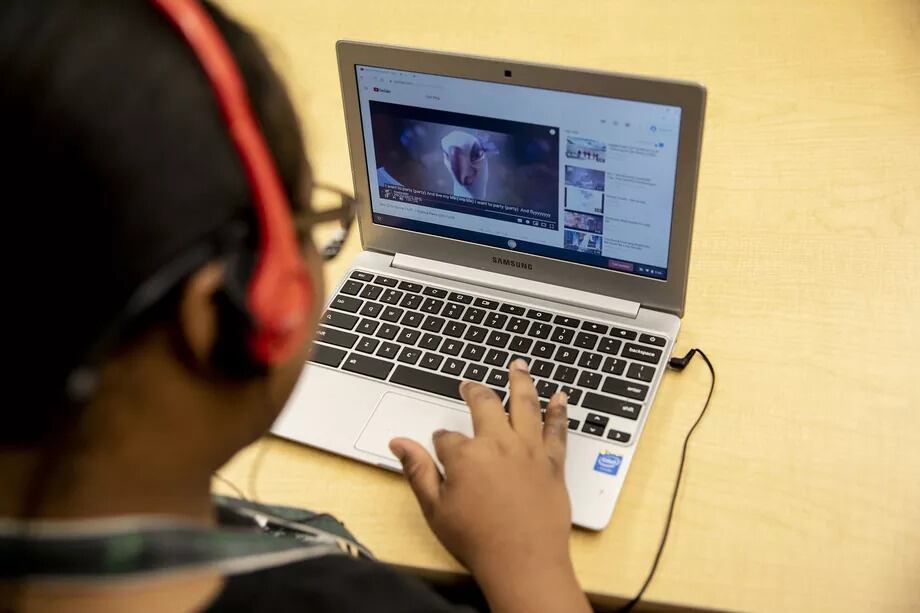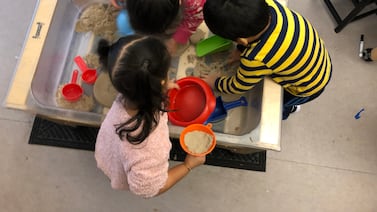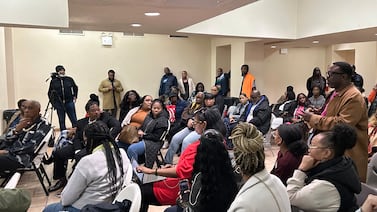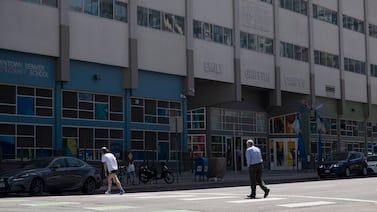The success of this school year was always going to depend on remote learning.
Even before rising coronavirus infections threatened once again to force all teaching and learning back online, the vast majority of students were learning virtually on most days.
On a given school day, up to 800,000 students are expected to sign in for remote learning from home — while a maximum of 102,000 students show up to buildings, department figures show. Yet New York City has yet to put forward a detailed strategy to help schools improve online instruction, according to educators, experts, and union officials.
Instead, schools have largely been left to forge approaches of their own, all while contending with new health and safety rules, changing directives from the city’s education department, and managing two school environments at once — in-person and remote.
The city has traditionally given individual schools wide latitude over teaching and learning, which generated uneven results even before the pandemic. But some educators have been saying for months that they want more help adapting to the virtual environment, as even veteran teachers have returned to the drawing board to execute the most basic elements of their craft.
“A lot of it has been each teacher figuring this out at the school level,” said Mike Loeb, a middle school science teacher at the Urban Institute of Mathematics in the Bronx. “I’m annoyed that we had the wrong outlook from the beginning: The focus was all in person.”
Mayor Bill de Blasio spent the summer pushing hard to reopen school buildings, and his administration has acknowledged that health and safety procedures have been their top priority. Preparing for the school year largely meant focusing on procuring protective equipment, spinning up a school testing infrastructure, and negotiating the details of teachers’ work responsibilities — even sacrificing a guarantee of live remote instruction for some students to help alleviate a staffing crisis.
Virtual instruction and efforts to improve it are rarely discussed at the mayor’s daily press conferences, except to argue that online learning is inferior to in-person education. Officials tend to emphasize that the city has purchased and distributed hundreds of thousands of devices with preloaded internet access, but have said little about the quality of instruction delivered on them. Meanwhile, the city’s teachers union was focused on health and safety issues in the run-up to school starting, even threatening a strike, but was quieter about how to prepare teachers for a new medium.
The focus on safety has paid some dividends. The district has avoided significant virus outbreaks, which has had some public health experts and national media suggesting that New York City could be a model of how to reopen school buildings safely. Many parents say even limited in-person schooling has been valuable, especially for students with disabilities.
Still, the lack of a systemwide effort to elevate best practices of remote instruction raises questions about the fate of student learning this year, especially as the city approaches the 3% coronavirus positivity rate that would trigger all district school buildings to shut down. There are also big implications for education equity: 44% of parents of color say they don’t plan to send their children back to classrooms this school year, compared with 10% of white parents, according to a recent poll conducted by the Education Trust-New York.
Education department officials say their remote learning strategy consists of “high-quality” digital curriculum materials and hundreds of training sessions that have been viewed tens of thousands of times, including “master class” focusing on Google Classroom, but also subject-specific training in math, ELA, science, and other areas. They also noted teachers were given a several additional days to prepare before the school year started, delaying the start of the school year.
“Teachers have undergone many hours of professional development, we’ve developed and made available digital curriculum and digital supports for students, teachers, and parents,” schools Chancellor Richard Carranza told reporters on Monday.
But some of the resources city officials promised have not materialized. City officials said they would hire “virtual content specialists” to help adapt their curriculum to a remote setting, though the teachers union said the city hasn’t hired a single one. “I don’t know why we have all these people who work in central, if it seems like they just tell schools to figure it out on their own,” Michael Mulgrew, head of the United Federation of Teachers, said last week.
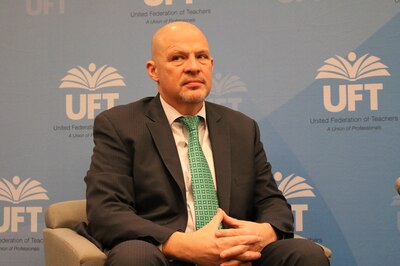
Meanwhile, teachers have been crunched for time to plan, attend training sessions, or confer with their colleagues to swap best practices. Teachers typically had about 80 minutes of professional development time a week. Now, about 40 minutes twice a month are devoted to “faculty and grade” conferences, which can include training, officials said. Funding for professional development was cut in this year’s budget.
“It’s a time when you need more,” said Verneda Johnson, a veteran science teacher at a Harlem middle school who said teacher training has been cut in half. “How many of us really know what we’re doing in digital spaces?”
The quality of each training can depend heavily on school leaders who are stretched even more than usual and may not have much time to prepare themselves. Recent sessions, Johnson said, focused on different functions within Microsoft Teams, including a virtual whiteboard and a tool that lets teachers conduct a poll of their students. Yet there has been little time for teachers to adapt the tools to their own lesson plans.
“Good intentions all around, but I need to see it more slowly and I need an opportunity to sit with it,” Johnson said.
Desperate to give their teachers more time than the 30 minutes allotted each day to plan their lessons, and another 30 minutes to coordinate lesson plans with their colleagues, some principals have blocked off entire days for teachers to devise units and share best practices, even though it cuts into students’ instructional time.
“There’s like no time for planning, which is crazy because there’s more of a need for it than ever,” said one Bronx high school principal who spoke on condition of anonymity for fear of reprisal. “No one can teach well if you don’t have time to plan.”
At the same time, some educators said their school’s training sessions are paying off. Carlotta Pope, an English teacher at Brooklyn Community Arts and Media High School, said she has benefitted from several training sessions, mostly offered by her school.
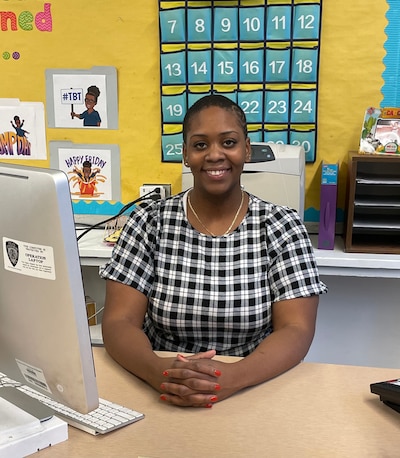
As a “peer collaborative teacher,” which offers a bump in pay to teachers who take on more responsibility, Pope has attended sessions on helping students devise digital notebooks and on understanding certain student behaviors like keeping their cameras off. “Starting school year off was much better than how we transitioned in March,” Pope said. “In my school, personally, I was able to get the resources.”
There is evidence that parents agree remote instruction is improving. Nearly 70% of city parents said remote learning has improved since the spring, though the feeling is not universal: Only 56% of Black respondents said the same, according to the Education Trust poll.
Tom Liam Lynch, the education policy director at the New School’s Center for New York City Affairs, said he’s worried that the lack of an overarching strategy to improve remote teaching could exacerbate inequities. He applauded the city for focusing on distributing hundreds of thousands of devices with internet access, but said the city lacks clear frameworks for educators and parents about what high-quality remote teaching should look like once they have met the basic threshold of digital access.
“There are absolutely examples of schools that are figuring out how to do [remote learning] well,” Lynch said. But, he added: “I don’t see anything resembling a cogent, coherent, systemwide strategy for improving online teaching.”

